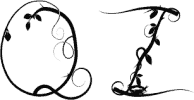Solar Opposites (Hulu)
This is a show from Justin Roiland, famous for Rick and Morty. In some ways it's just another way for Roiland to voice his frustration with the dumb things he sees in the world. Rick, the grandfather in Rick and Morty, and Korvo, the father-figure in Solar Opposites, are both science minded characters who rail against the stupidity around them. Neither is very good at empathy, and both have trouble with social conventions.
This story is much more sitcom-esque than Rick and Morty, and feels less radical. There's a basic story line of aliens trying to fit in on Earth with different levels how much they care about fitting in and different priorities. This story doesn't have much in the way to continuity between episodes. But there is a subplot involving Yumyulack's collection of shrunken people he keeps in his ant-farm-like terrarium bedroom wall; called "The Wall" by the people inside it.
(I say "he" for Yumyulack because that's the gender the character choose to emulate on Earth. The aliens, although clearly written to have human genders, are apparently supposed to biologically genderless.)
The Wall makes direct references to Escape from New York, and has a very 1970s or early 1980s future dystopia quality to it. There is a very definite story arc to these segments, and unlike the rest of the episode, seeing them out of order would be confusing.
To me, The Wall is the best part of Solar Opposites and I was very pleased with episode seven being almost entirely Wall story, with the titular story ("Terry and Korvo Steal a Bear") told wordlessly through what can be seen out of the windows of the terrarium prison. The rest of the show for the season is rather hit-or-miss.
Five of eight levels in The Wall.
Solar Opposites at IMDB
Rick and Morty at IMDB
Escape from New York at IMDB
 qz thoughts
qz thoughts